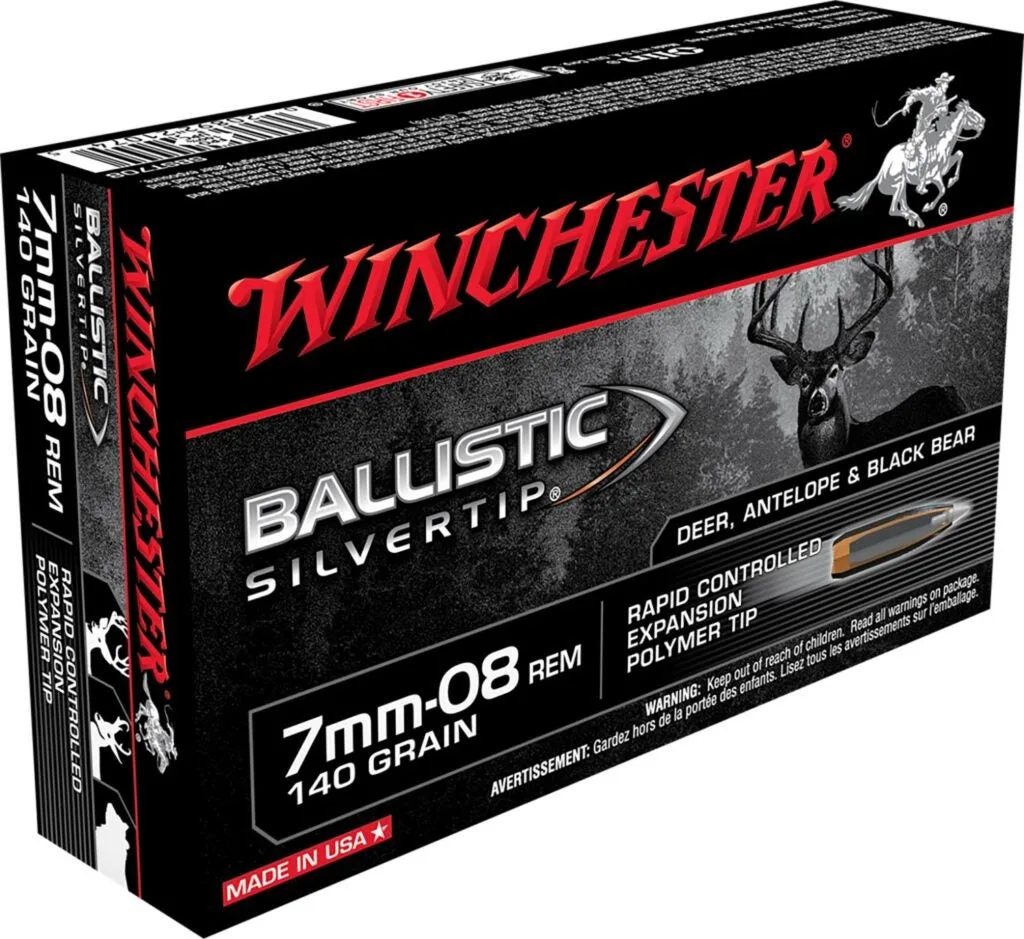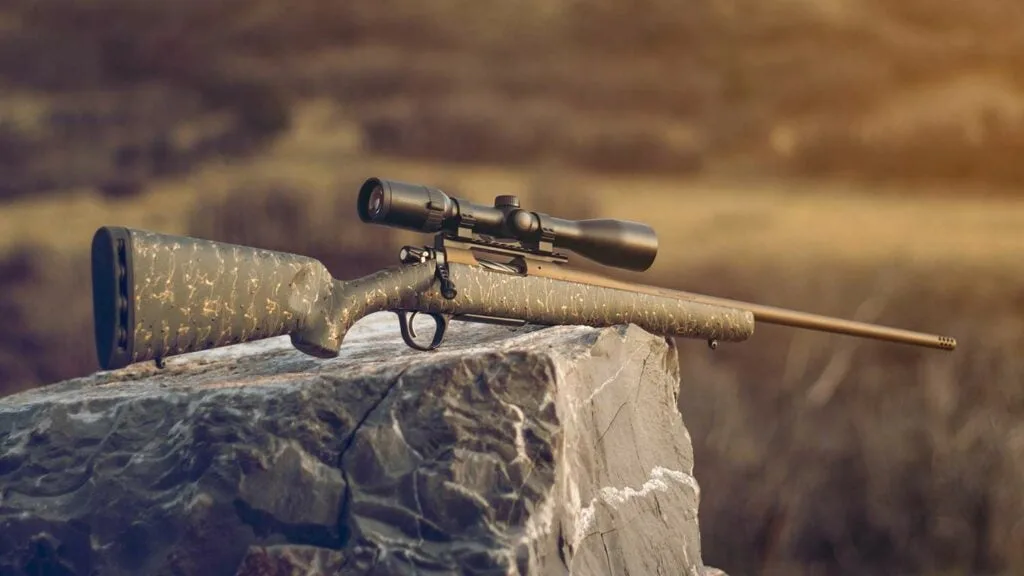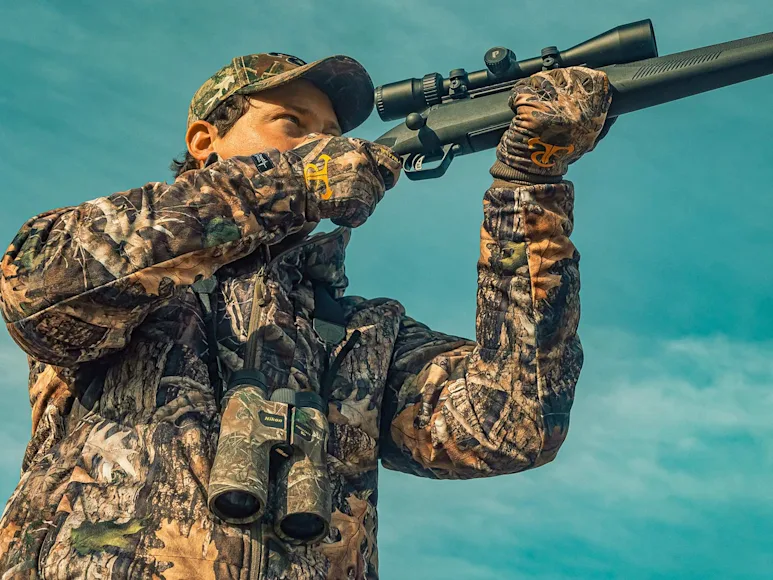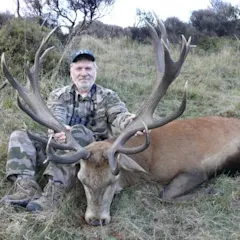We may earn revenue from the products available on this page and participate in affiliate programs. Learn more ›
Choosing a deer rifle that will always be up to the job, no matter the situation or weather, for as long as you need it, is tricky. You have almost too many options.
A couple of weeks ago I was speaking with a hunter who had grown up in eastern Europe under a Communist regime. When he came to the United States, he said, the first thing he did was go to a Walmart and walk down the aisles in wonder. So astounded was he by the variety of goods that he went back a second and third day to make sure it wasn’t a trick.
So it is with whitetail hunters. We are besieged with rifles, bombarded with cartridges, and beset with scopes. You can get more conflicting advice on a deer rifle than you can on the stock market. But be of good cheer; salvation is at hand. The answers to all your questions follow, including what basic features to look for in a rifle and some specific recommendations.
Pick the Right Action for Your Deer Rifle

A bolt-action is the best choice for an all-purpose deer rifle. The Ruger American is a good and affordable example. Ruger
Let’s begin by accepting the fact that speed of fire is valuable in military weapons and nowhere else. Flinging lead is futile no matter how fast it flies out the bore. Ninety-nine percent of the time, a deer is taken or lost on the first shot. So, for an all-purpose deer rifle, we can immediately rule out those actions whose main virtue is speed of fire: the lever, the pump, and the auto. (The one exception to this rule is if you’re looking for a rifle specifically for snow-tracking whitetails in the big woods. But in that case you’re not after an all-purpose deer rifle, are you? There are so few dedicated deer trackers left that it’s almost a moot point, but if it’s a specialized rifle for tracking you want, here is a list of good ones.)
But, you ask, what about that 1 percent of the time where a fast second shot could decide whether you eat venison or corned-beef hash? In the real world, it almost never helps. The availability of fast repeat shots beguiles hunters into sloppy shooting, and they miss far more than people who are forced to do it right with the first pull of the trigger. As an international-caliber high-power shooter I knew used to snarl, “Rapid fire is the crutch of the incompetent.”
This leaves us with the bolt, which, coincidentally, is also the strongest, the most reliable, and the safest, and comes with the best trigger. How are you going to argue with that?
Get the Right Weight and Barrel Length
The ideal weight for a deer rifle is between 7 and 8 pounds with scope, sling, and a full magazine. In this world of marvels you can buy bolt guns that weigh as little as 5 or 6 pounds, but they are extremely hard to hold steady because they are so light.
For most whitetail cartridges, a barrel of 22 inches is about ideal. A longer barrel is more difficult to maneuver through the brush, and it adds weight. For cartridges like the 7mm/08 and .308, which don’t burn a lot of powder, you can get by with 20 inches, and that makes for a very handy gun. The price you pay is a little added muzzle blast, but it’s nothing you can’t live with.
Choose the Right Stock and Finish for Your Deer Rifle

The Winchester Model 70 Extreme Weather SS makes a excellent and rugged, mid-priced deer rifle. A synthetic stock is more stable than wood and stainless steel more weather-resistant. Winchester
Wood is beautiful; wood is a miracle of nature; wood does strange and unpredictable things when exposed to changes in the weather. Your wood-stocked rifle that shot perfectly in the bogs of Mississippi may shoot a foot higher than it was sighted in for when you take it to the mountains of Montana. That is why we invented Kevlar, fiberglass, graphite, epoxy, carbon fiber, and all that other soulless stuff that, when made into a rifle stock, does not shift, warp, or bend. You can drive tent stakes with a good synthetic stock.
The strongest and lightest synthetic stocks are made of Kevlar and carbon fiber, and equally good ones, although heavier, are made of fiberglass. Below this level are a half dozen other materials that are much less expensive, but satisfactory.
Blued steel (chrome moly, for the metallurgically inclined) looks nice and is traditional. Stainless steel is jarring to some, and is tougher to machine, but it rusts much more slowly in rain, snow, and dew. Stainless barrels also last longer because they are more resistant to the scorching of powder gas. This one is a toss-up: If bright metal offendeth thee, go with blued steel. If you’d rather not worry about the rifle, get stainless. Or you can enjoy the best of both worlds and get a stainless barrel that’s been Cerakoted in an appropriately neutral color.
Go with One of the Best Deer Cartridges

Winchester’s Supreme Ballistic Silvertip in 140-grain 7mm/08 makes a great deer round. Winchester
Deer are small, fragile animals that are almost always taken at close range and don’t require a cannon to put them down. This selection of deer cartridges will delight and amaze you with both their good manners and their efficiency.
1. .270 Winchester
This cartridge made its debut in the 1920s, but it is still an unbeatable combination of ample power, flat trajectory, and minimum recoil. It will handle anything from antelope to elk and has dropped more deer quickly than anything else I’ve used. I took one to Africa in 1988, and it did just fine. (A friend of mine used to hunt African lions with a .270, and he’s still alive.)
2. 7mm/08 Remington
This is a .308 Winchester necked down to .284. It has minimum recoil and is absolutely deadly at ranges out to 250 yards, beyond which its modest velocity makes the .270 a better choice. The best 7mm/08 loadings I’ve used are the Winchester Supreme cartridges with either the 140-grain Ballistic Silvertip or the 140-grain Fail Safe bullets.
3. .308 Winchester
See above. This one is best used with any quick-expanding 150-grain bullet. You will smile; the deer will not.
4. 6.5 Creedmoor
People who can’t stop raving about today’s wonder-cartridge may be annoying, but they are not wrong. The Creedmoor does more, farther out, with less recoil than any other deer cartridge you can think of.
5. .30/06 Springfield
The ought-six is actually too powerful for all but the biggest deer, but how can you omit it? The best bullets are quick-expanding 150- and 165-grainers.
Match a Great Scope to a Great Deer Rifle

The Leupold VX 3i 2.5-8x36mm is an ideal all-around whitetail scope. Leupold
An all-purpose deer rifle needs to be light enough to carry all day. Don’t undermine this by adding a monstrosity of a scope. A 1.5X-5X or 2X-7X model is dandy for a lightweight bolt in wooded areas. A 3X-9X or 2.5X-10X is all you need just about anywhere; 12X should be the limit. Keep the objective lens under 44mm.
For most whitetail deer hunting, you’ll never need exposed elevation and windage adjustments, but if you plan to shoot long and that’s your preference, fine. Otherwise, a scope with a simple range-compensating reticle is the way to go, and a plain Duplex isn’t outdated for whitetails in most wooded or mixed-cover areas.
Do not skimp on your scope. Smart hunters spend nearly as much for their glass than they do for their gun. Some spend more and never regret it. There are many wonderful scopes that will do just fine for deer. To name a few, the Leupold VX 3i 1.5-5x20mm is small, light, and you can see the whole world through it. If you’re going to hunt in the brush, there is nothing better for the price. The same model in 2.5-8X36mm is a masterpiece—plenty of power for just about any kind of shooting, but with very little weight and bulk. The Swarovski Z3 3-10x42mm offers superb optics at a reasonable cost for what you get.

Although marketed as a long-range Western mountain rifle, the Christensen Mesa meets all the requirements of a superb all-purpose deer rifle. Christensen Arms
As with scopes, there are too many suitable rifles to list them all here, and your best option depends on what you can spend, so I’ll name a few standouts in a range of prices. If you’re on a tight budget, the Ruger American, Weatherby Vanguard, Savage Axis II XP, and Winchester XPR can all be had for around $500 and offer MOA accuracy. If you can spend more, the Winchester Model 70 Extreme Weather SS, Tikka T3x Lite Roughtech, and Christensen Arms Mesa are very good choices. And if you’re willing to shell out for top-on-the-line performance, you won’t go wrong with a Seekins Precision Havak Pro Hunter 2 Proof’s Elevation MTR, or a Nosler M48 Long-Range Carbon. My advice: Save your pennies and get the best rifle you can, even if it means spending more than you think you should. It’ll last much longer than you will, and over the long haul will be worth every one of those pennies you saved.






